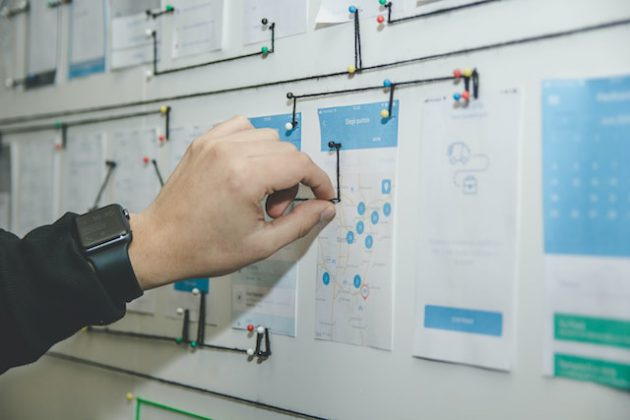Last week, I introduced a new series to the blog called “ABCs of AP.” This series will break down some key ideas you need to understand and optimize your business’s accounts payable process. I started with a post about the value of automation, in which I outlined some of the major challenges of the Accounts Payable process and how an automated solution like Pyrus addresses those challenges. One of the major advantages of automation involves the improved coordination between AP and budgeting. This link is critical. Not only does AP rely on information from the company budget, the company budget also depends on data from AP. Here’s a breakdown of the major reasons the company budget and AP process are so intertwined.
Budget Creation Requires AP
Most of us are probably familiar with the term “budget,” but just in case, here is a quick overview of what a budget is and does for a company. Essentially, the main function of a budget is to allow management to plan for the future. Specifically, a budget plans the allocation of resources for an upcoming accounting period. Often, a company uses its budget to plan for the upcoming year. However, it can also reevaluate in shorter increments of time, such as every month.
As this textbook diagram indicates, a company’s master budget consists of many components. Examples include the production budget, the sales budget, and the cash budget. That last piece is where Accounts Payable comes in. As you can see in the diagram, the cash budget is linked directly to payments. Information about accounts payable references payments due to vendors for goods and services received. This indicates costs in the cash budget. This step-by-step guide to creating a cash budget for a small business breaks down all the information needed to create the budget, including past AP transactions. The general ledger contains that information.
The General Ledger and the Budget
Whereas a budget plans for future financial transactions, the general ledger tracks transactions as they happen. Creating a budget necessitates an evaluation of recorded transactions from the past. A company uses this record to understand how it typically earns and spends its money. That’s all in the general ledger.
This complete guide to the general ledger explains its primary role as summarizing a business’s financial information. This is what someone creating a budget will reference. The guide provides a simple example of what general ledger entries for one month can look like. It includes both revenue and expenses. Accounts payable forms a sub-category of the general ledger. It’s also one element of the accounting process that relies on AP. Timely and accurate AP processing provide up-to-date, correct information for the general ledger.
To be clear, the general ledger does not only inform the projected budget of a company. It also plays a role after the budget has been created. The general ledger facilitates analysis of how successfully the budget predicted the company’s financial position. That process, called variance analysis, ties in directly to AP.
Variance Analysis Requires AP
This article from Accounting Coach provides some basic information about the process of variance analysis. To put it simply, a variance represents the difference. It compares the amount budgeted for a category of financial transaction to the amount actually recorded. For an example, a budget may allow for $800 in Accounts Payable for the year. If the general ledger then shows that AP processed $1,000 of payments that year, there’s a $200 variance.
Analysis of variances is necessary to determine the reasons for the variance. This analysis will then inform future budgets. It may be obvious why companies use this analysis in some situations. When the actual amounts exceeded the budgeted amounts, that’s cause for concern. Still, that’s actually not the only purpose of variance analysis. Even a favorable budget variance, as explained in this article, should be analyzed. Thus, the AP process needs to document all payments accurately and efficiently. This best provides the necessary information for timely variance analysis.
But AP Also Needs Budgeting
For all the above reasons, the Accounts Payable process running smoothly facilitates budgeting success and evaluation. At the same time, AP depends on accurate budget information. This list of AP tips emphasizes the importance of providing budget information to employees of the AP department. That’s because AP employees need to understand what has been allocated for various expenses. This allows them to plan payments accordingly.
An organized general ledger not only yields a budget projection, but also the necessary data for a balance sheet. This article describes the role of this financial statement. A balance sheet provides an overview of the company’s financial position at any point in time. It should include both assets and liabilities. Generally, it’s prepared at the end of every accounting period, which can vary in length. Management will use the balance sheet to regularly take the pulse, so to speak, of a company’s financial health.
One way of measuring financial health is through the current liquidity ratio, explained in this article. The current liquidity ratio determines the company’s ability to pay its bills. It does this by comparing current assets to short term liabilities, such as payroll obligations and accounts payable charges. That ability is also known as the company’s liquidity.
Accounts Payable employees need to be able to compare liquidity to budget expectations. That comparison guides their freedom in authorizing AP payments. If the company is running low on assets, AP employees need to be alerted. They can then assess which vendors have more flexible due dates on their invoices. In other words, AP employees can account for dips in a company’s financial health. This requires wisely planning the timeline of the payments they approve. To do this, the AP department needs access to the budget and balance sheet information.
Sorting Payments by GL Codes
Another reason the Accounts Payable process would reference the budget and general ledger is to categorize payments approved. As this article explains, general ledger (GL) codes are used to sort AP data and facilitate data analysis. Part of the obligation of AP employees is to make payments and track them in an organized manner. This guide to the general ledger provides an example of how AP payments would be recorded by category. In the first example general ledger, payments are only sorted by named categories. However, in the second example, an additional column documents the assigned codes for each category of financial transaction. AP employees need to correctly assign GL codes to the payments they make. This provides accurate information for the general ledger. The general ledger, in turn, informs the balance sheet and future budgets.
Simplified by Automation
All this information may seem overwhelming. How do you ensure that all the documents and employees involved can communicate information in time? Well, automating AP addresses much of the issue. This video highlights some of the key features of Pyrus’s automated Accounts Payable solution, including referencing the budget automatically and using AI to assign GL codes to charges automatically. Check out more about this simple and elegant solution here. Plus, stay tuned for the next blog post on communication and the role it plays in streamlining the AP workflow.




